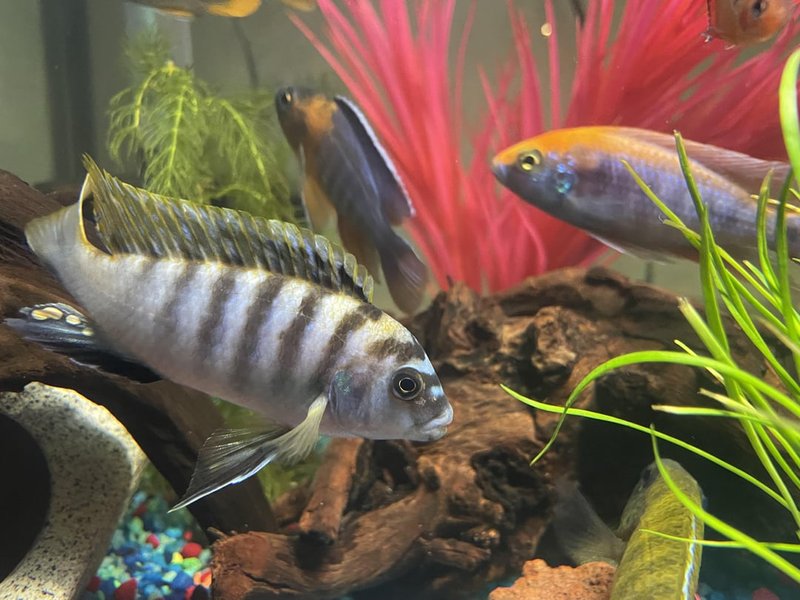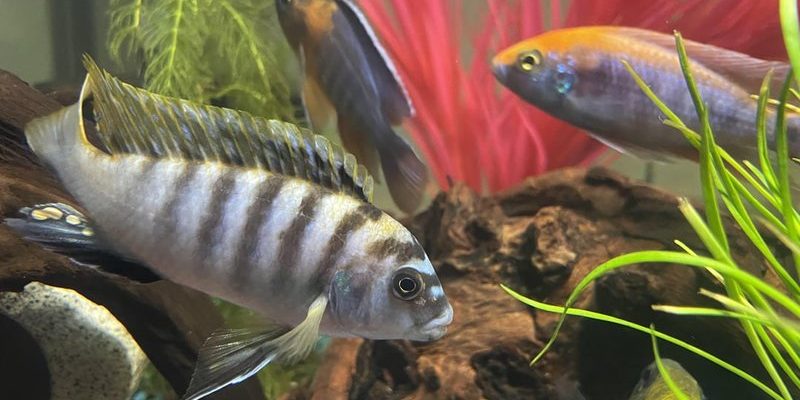
Whether you’re a newbie to fishkeeping or a seasoned aquarist, familiarizing yourself with cichlid behavior is crucial. These fish are known for their unique traits, but it’s essential to know what to look for, especially since their behavior can indicate their health, environment, and social standing. In this article, we’ll explore the ins and outs of cichlid behavior, what it means, and what signs to watch for, helping you create a thriving aquatic community.
Understanding Cichlids: The Basics
Cichlids are a diverse family of freshwater fish, often found in Africa’s Great Lakes and parts of South America. They stand out for their vibrant colors and intricate patterns, making them a favorite among fish enthusiasts. But beyond their beauty, cichlids are known for their complex behaviors. Their social interactions can resemble those of a small town, with hierarchies and territories.
These fish are territorial, which means they often defend a specific area against others, making their social behavior particularly intricate. Here’s what to know about their social structures:
- Hierarchy: In cichlid groups, there’s often a dominant fish known as the alpha. This fish typically has the best access to resources like food and nesting sites.
- Breeding behavior: During breeding, cichlids showcase some unique behaviors, such as elaborate courtship displays and even nest building.
- Parental care: Many cichlid species are known for their dedication to offspring, often keeping them close and protecting them from threats.
Understanding these basic social elements can help you interpret their behavior better and enhance their living conditions in your aquarium.
Territorial Behavior: What To Look For
Cichlids are notoriously territorial. If you notice your cichlid displaying aggressive behavior, like chasing or nipping at other fish, it’s often a sign they’re asserting their dominance. This can happen when they feel their space is being encroached upon.
Here’s how to recognize territorial behavior:
- Posturing: Watch for them flaring their fins and spreading their gill covers. This is a warning sign to other fish.
- Chasing: If they start chasing smaller fish around the tank, they might be trying to claim their territory.
- Nesting: Look for them digging in the substrate; this behavior often indicates they’re preparing a breeding site.
If you see this type of behavior, ensure your tank is appropriately sized and has plenty of hiding spots. This will help reduce stress levels and give your cichlids safe spaces.
Mating Rituals: The Dance of Courtship
One of the most captivating aspects of cichlid behavior is their courtship rituals. These fish are passionate when it comes to mating, often putting on colorful displays that can be quite a spectacle.
During this time, you’ll see some unique behaviors:
- Colorful Displays: Males may change color to attract females, becoming more vibrant to showcase their fitness.
- Bubble Nests: Some cichlids, like the Betta, create bubble nests as part of their courtship process.
- Chasing and Nipping: Expect some playful chasing; it’s all part of the dance of courtship.
If you’re lucky enough to witness this, it’s a sign that your cichlids are healthy and happy. Just be careful, as sometimes the courtship can turn aggressive if not managed properly.
Social Hierarchy: Who’s Boss?
Understanding the social hierarchy in your cichlid tank is crucial for maintaining peace. Each fish has its place in the pecking order, and disturbances in this order can lead to stress or aggression.
You might find that:
- Dominance Displays: Look for signs like one fish asserting its presence through fin displays or head-bobbing.
- Submissive Behavior: Subordinate fish often show submissive postures, like lowering their bodies or hiding.
- Challenging Behavior: New additions to the tank might provoke challenges from established fish, leading to conflicts.
Keeping a close eye on these interactions can help ensure your fish live harmoniously, reducing potential issues in the tank.
Stress Indicators: What To Watch For
It’s important to note that not all behaviors are positive. Stress is a serious issue in the cichlid world, and recognizing the signs early can make a huge difference. Some common indicators of stress include:
- Hiding: If your cichlid suddenly becomes reclusive, it might be stressed or unwell.
- Color Fading: A healthy cichlid is vibrant. If you notice its colors dulling, it’s a signal that something’s off.
- Aggression: Increased aggression towards tank mates can be a sign of stress or discomfort.
If you see these signs, it may be time to assess your tank’s environment. Check water quality, tank mates, and overall conditions to ensure you’re providing the best habitat possible.
Feeding Behavior: Observing Their Preferences
Cichlids can be picky eaters, and observing how they react during feeding time can tell you a lot about their health and mood. You’ll notice each cichlid may have its feeding preferences and quirks. Here are some things to look out for:
- Feeding Frenzy: A healthy cichlid will actively hunt and compete for food. If they’re enthusiastic, it’s a good sign.
- Selective Eating: Some may refuse certain foods. If your cichlid is ignoring its favorites, it could indicate health issues.
- Water Column Swimming: Cichlids might swim up and down the tank, showing excitement during feeding times.
Pay attention to their eating habits. It can provide insight into their overall health and happiness, helping you adjust their diet accordingly.
Cichlid behavior is a fascinating blend of social interaction, territorial instincts, and stunning displays. By paying attention to their quirks and changes, you can better understand your fish and create a harmonious environment in your aquarium. Remember, each cichlid has its personality, much like people.
So, as you sit back and watch your cichlids dance, flirt, and sometimes squabble, know you’ve got the tools to interpret their aquatic soap opera. With a little awareness and care, you can enjoy a thriving, vibrant aquarium that showcases the beauty and behavior of these incredible fish.

